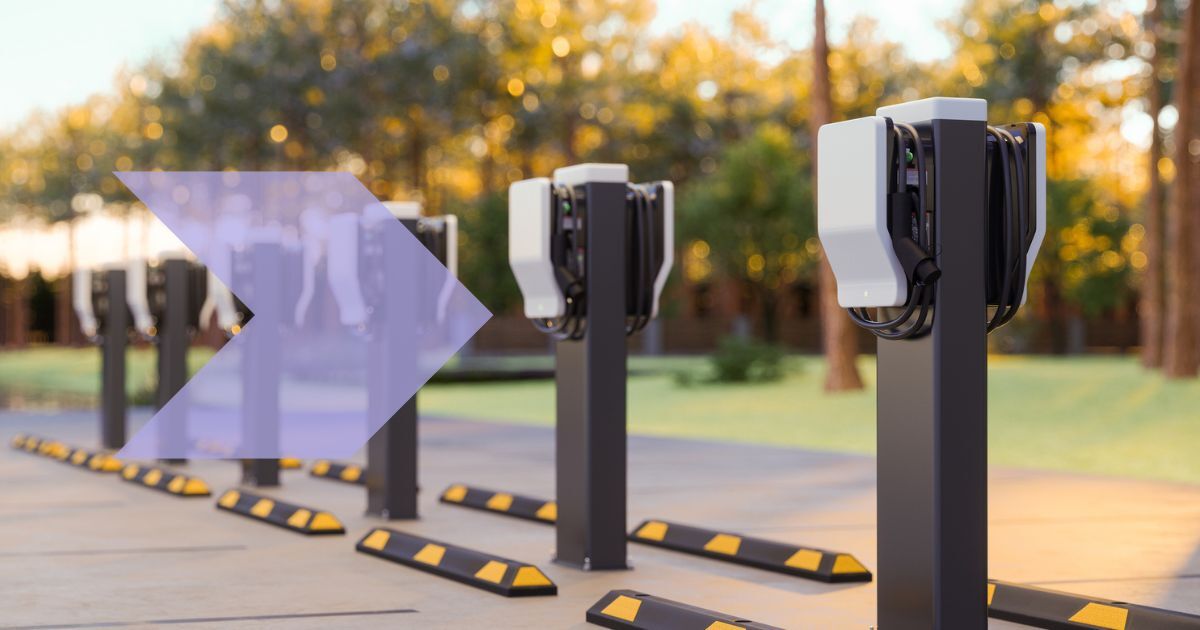The future of EV charging: why connectivity is your competitive edge
EV charging is booming—but reliability isn’t keeping up. As public networks grow, keeping chargers online has become the real challenge. In fact, nearly 1 in 4 US chargers is offline at any given time. That’s not a hardware issue—it’s a connectivity one. This blog explores how the right network setup can slash downtime, boost revenue, and turn your EV charging sites into smart, resilient assets.

EV charging infrastructure is growing rapidly, but staying online is a different story.
In 2024, the world added over 1.3 million public charging points. A 30% increase from 2023 (iea.blob.core.windows.net). But availability isn’t the same as reliability. A four-year review of 20,000 US chargers found that real uptime averaged just 73.7%, far below the 84.6% self-reported figure (theverge.com).
That’s a serious problem for drivers — and for your business.
Whether you run 20 chargers or 2,000, every offline unit is lost revenue, frustrated customers, and reputational damage. Hardware isn’t the hard part anymore. Uptime is. And uptime depends on secure, resilient connectivity.
From a hardware race to a reliability race
Even the best 350 kW charger is worthless if a driver finds it offline. Regulators understand this: the US National Electric Vehicle Infrastructure (NEVI) programme now requires ≥ 97% average annual uptime for every funded port (federalregister.gov).
What does that mean for operators? You need infrastructure that’s not just fast — it’s reliable, self-healing, and connected end to end.
Connectivity makes that possible by enabling:
-
Instant fault detection & remote resets that slash truck-rolls.
-
Friction-free customer journeys: real-time authorisation, live pricing, “plug & charge” convenience.
-
Actionable data for dynamic pricing, site planning and grid-service revenue.
Cellular IoT & 5G -The new backbone
Copper lines and site Wi-Fi aren’t built for this. They suffer from coverage issues, local interference, vandalism and poor scalability. That’s why more operators are switching to cellular IoT.
In fact, the EV charging connectivity market is projected to grow from $2 billion in 2024 to $4.1 billion by 2030, with a 13.3% CAGR (researchandmarkets.com).
Cellular solutions offer built-in redundancy and remote management. They scale better, secure better, and install faster. Here’s how the tech stacks up:
-
LTE-M / NB-IoT – Low power and ~50–100 ms latency. Perfect for AC chargers in cities where power draw is modest and coverage is dense.
-
5G NR & RedCap (coming 2025) – Sub-10 ms latency and high throughput. Ideal for high-power charging (HPC), over-the-air firmware updates, and latency-sensitive grid participation.
-
Multi-network eSIM/iSIM – Devices switch automatically to the strongest local network. Outage risk falls below 2%, outperforming most fibre SLAs
Security & interoperability- closing the gaps
Before you scale, fix three common pain points:
-
Protocol mismatches – Mixing OCPP 1.6 with 2.0.1 backends can cause silent failures. Certify new installs on OCPP 2.0.1. Use schema validation and fallbacks to support legacy units.
-
Payment data exposure – Charging often involves credit card details.
- Use private APNs and end-to-end encryption to stay inside PCI-DSS boundaries.
- Follow CharIN’s PKI recommendations for managing digital certificates (e.g. ISO 15118 plug & charge) (charin.global)
-
Latency-sensitive services – Grid services like demand response or V2G require near-real-time communication.
- You’ll need <20 ms round-trip latency for these to function reliably. Only 5G can guarantee that, not LTE.
- The US Department of Energy’s 2025 Vehicle-to-Grid Integration Report confirms that secure, low-latency connectivity is a prerequisite for monetising grid services (energy.gov).
Smart energy & V2G, monetising the connection
Once your chargers are reliably online, you unlock new revenue streams beyond just “plug and pay.”
-
Dynamic load management – Sub-second control helps you dodge demand charges on high-load sites
-
Vehicle-to-grid (V2G) – Bi-directional chargers allow fleet operators to sell frequency response and grid-balancing capacity
-
Higher utilisation – Networks using real-time data for dynamic pricing report ~10% uplift in charger usage during early pilots (chargelab.co).
In other words, connectivity turns your chargers into energy assets. No comms, no grid play.
CTO checklist: choosing a future-proof connectivity partner
Here’s what to prioritise in your next RFP:
-
Multi-network coverage – Outage SLA below 2% in every target market
-
Private networking (VPN/APN) – Essential for PCI-DSS compliance and data security
-
API-first CMP – Real-time diagnostics, webhooks, bulk control
-
Clear commercials – Pooled data plans, fair roaming policies, path to 5G RedCap
-
Regulatory alignment – Support for GDPR, CCPA, and local data-residency rules
Connectivity is a board-level issue
Best-in-class connectivity turns charging infrastructure into high-margin, software-defined assets.
Operators who treat the network as strategic infrastructure — not just another cost line — are outperforming their peers. They’re seeing higher uptime, better customer satisfaction, and stronger returns from smart energy participation.
And with new mandates pushing uptime, cybersecurity, and grid integration, this isn’t just about future-proofing. It’s about staying in the game.
